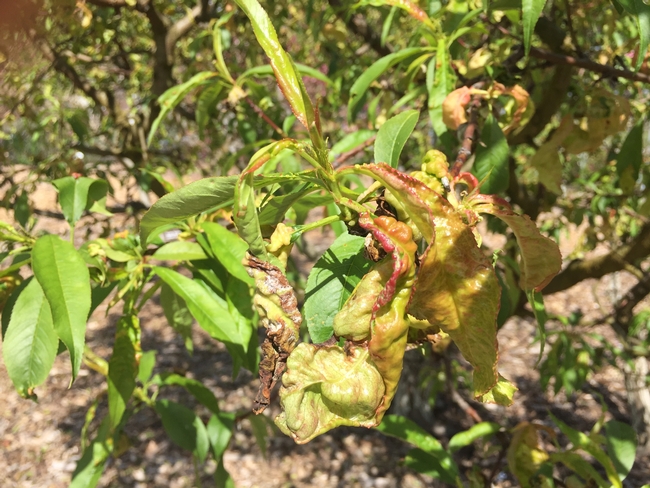Spring is just around the corner and many types of fruit trees are starting to develop their leaves. If you are growing peaches or nectarines and are now seeing symptoms of peach leaf curl on new leaves, unfortunately it's too late to manage the disease.
According to University of California research, peach leaf curl can only be effectively managed during the fall and winter, after leaves have dropped but before buds swell in spring. After bud break (when new buds begin to open), you may notice symptoms on new leaves but at this point, there are no effective controls. Pesticides used against peach leaf curl prevent the disease as opposed to curing it. Currently there are no verified curative methods for controlling peach leaf curl during the growing season.

Peach leaf curl is a fungal disease that primarily affects peach and nectarine trees. Its spores overwinter on the twigs and flower buds, and germinate in the spring causing distorted, reddened leaves. If left untreated for several years, trees can decline and may need to be removed. In some cases, peach leaf curl can also affect fruit quality.
During the dormant season (fall and winter), spray affected trees with a fungicide containing the active ingredients copper or chlorothalonil. These active ingredients can be used alternately to limit copper buildup in the soil. Horticultural oils and other fungicides have not proven to be effective against peach leaf curl. Always read the label of the pesticide product you want to use and verify that it is labeled to treat the pest you are dealing with. To learn more about pesticide active ingredients and their potential toxicity, see the UC IPM Pesticide Active Ingredient Database.
To learn more about this disease and its management, visit the UC IPM Pest Notes: Peach Leaf Curl.